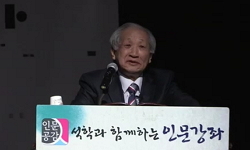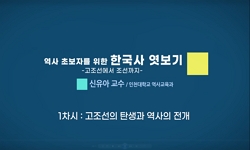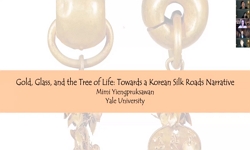According to the observation of the splitting traces on the side of the early Silla Dynasty roof tiles excavated from the moat of the Wolseong Fortress in Gyeongju, there was a new finding that the second separation process was performed by cutting th...
http://chineseinput.net/에서 pinyin(병음)방식으로 중국어를 변환할 수 있습니다.
변환된 중국어를 복사하여 사용하시면 됩니다.
- 中文 을 입력하시려면 zhongwen을 입력하시고 space를누르시면됩니다.
- 北京 을 입력하시려면 beijing을 입력하시고 space를 누르시면 됩니다.

삼국시대 기와의 쐐기분할기법에 대하여 = About Wedge Splitting Technique on Roof Tiles from the Three Kingdoms Period
한글로보기https://www.riss.kr/link?id=A108413053
-
저자
차순철 (서라벌문화재연구원)
- 발행기관
- 학술지명
- 권호사항
-
발행연도
2022
-
작성언어
Korean
-
주제어
신라 ; 기와생산집단 ; 쐐기분할기법 ; 월성 ; Silla ; Roof Tile Production Group ; Wedge Splitting Technique ; Wolseong
-
등재정보
KCI등재후보
-
자료형태
학술저널
-
수록면
48-74(27쪽)
- 제공처
-
0
상세조회 -
0
다운로드
부가정보
다국어 초록 (Multilingual Abstract)
Silla’s roof tiles that used the wedge splitting technique were mostly togi guyeon ammaksae (roof-end tiles with earthenware strip around the rim), which were presumed to be the first roof-end tiles, and some convex roofing tiles. Considering that the wedge splitting technique was not confirmed with the earthenware artifacts excavated from the Earthenware Kiln No. 3 in District C-I-2 of Gyeongju Songok-dong and Mulcheon-ri Sites where togi guyeon ammaksae were produced, whether this technique was used or not may reflect the difference between the tile-making groups and the limitation of tile use at the time.
It is presumed that the wedge splitting technique was used to smoothen the side of the tile during the production of tiles at the time, and considering that it was mainly excavated from the moat of the Wolseong Fortress, Crown Prince Palace, and the Wolji Site, it is highly likely that the tiles were used exclusively. Considering that various types of short stamped roof tiles, including short stamped roof tile with the inscription of ‘Uibong 4 Nyueon Gaeto (儀鳳4年開土),’ which was produced in the 19th year in King Munmu’s reign (679) immediately after the unification of three kingdoms, were trimmed several times on the sides to erase the splitting trace, it is presumed that the production of roof tiles in Silla around the sixth century was divided into general splitting and additional splitting works. And the use of this specific technique is thought to reflect the characteristics of the tile-making group.
According to the observation of the splitting traces on the side of the early Silla Dynasty roof tiles excavated from the moat of the Wolseong Fortress in Gyeongju, there was a new finding that the second separation process was performed by cutting the side and then sticking the cut side with a wedge, unlike the commonly known method. This technique was named the <Wedge Splitting Technique> by emphasizing the shape of the wedge remaining on the cut side, and similar cases and time of use was estimated.
Silla’s roof tiles that used the wedge splitting technique were mostly togi guyeon ammaksae (roof-end tiles with earthenware strip around the rim), which were presumed to be the first roof-end tiles, and some convex roofing tiles. Considering that the wedge splitting technique was not confirmed with the earthenware artifacts excavated from the Earthenware Kiln No. 3 in District C-I-2 of Gyeongju Songok-dong and Mulcheon-ri Sites where togi guyeon ammaksae were produced, whether this technique was used or not may reflect the difference between the tile-making groups and the limitation of tile use at the time.
It is presumed that the wedge splitting technique was used to smoothen the side of the tile during the production of tiles at the time, and considering that it was mainly excavated from the moat of the Wolseong Fortress, Crown Prince Palace, and the Wolji Site, it is highly likely that the tiles were used exclusively. Considering that various types of short stamped roof tiles, including short stamped roof tile with the inscription of ‘Uibong 4 Nyueon Gaeto (儀鳳4年開土),’ which was produced in the 19th year in King Munmu’s reign (679) immediately after the unification of three kingdoms, were trimmed several times on the sides to erase the splitting trace, it is presumed that the production of roof tiles in Silla around the sixth century was divided into general splitting and additional splitting works. And the use of this specific technique is thought to reflect the characteristics of the tile-making group.
국문 초록 (Abstract)
신라기와 중 쐐기분할기법이 사용된 것은 대부분 최초의 암막새로 추정된 토기구연암막새와 일부 미구기와 등이다. 당시 토기구연암막새가 생산된 경주 손곡동‧물천리유적 C-Ⅰ-2지구 3호 토기요지 출토품에서 쐐기분할기법이 확인되지 않은 점으로 볼 때, 이 기법의 사용여부는 당시 기와제작집단과 사용처가 한정될 가능성을 보여준다.
쐐기분할기법의 존재는 당시 기와생산과정에서 기와 측면부를 매끈하게 만들기 위한 시도로 추정되며, 월성해자와 동궁과 월지유적에서 주로 기와가 출토된 점은 기와 사용처가 제한되었을 가능성이 크다. 삼국통일 직후인 679년(신라 문무왕 19)에 생산된 ‘의봉4년개토’명 단판타날기와를 비롯한 여러 종류의 단판타날기와는 측면을 여러 차례 다듬어서 와도분할흔적을 지운 모습이 확인되는 점으로 볼 때, 이미 신라는 6세기에 기와를 생산하면서 일반적인 분할작업을 사용한 것과 추가적인 작업공정을 한 것으로 구분했다고 생각된다. 그리고 이러한 특정기법의 사용은 기와를 제작한 와공집단의 특징을 반영한 모습으로 생각된다
경주 월성해자에서 출토된 신라 초기 기와 중 무와통작법과 모골와통작법으로 제작된 기와의 측면부의분할흔적을 관찰한 결과 일반적으로 알려진 분할방법과 달리 추가로 2차 작업을 한 분...
경주 월성해자에서 출토된 신라 초기 기와 중 무와통작법과 모골와통작법으로 제작된 기와의 측면부의분할흔적을 관찰한 결과 일반적으로 알려진 분할방법과 달리 추가로 2차 작업을 한 분할기법이 새롭게 확인되었다. 이 기법을 와도분할면에 남아있는 특징에 주목하여 <쐐기분할기법>으로 명명하고 유사사례와사용시기를 추정하였다.
신라기와 중 쐐기분할기법이 사용된 것은 대부분 최초의 암막새로 추정된 토기구연암막새와 일부 미구기와 등이다. 당시 토기구연암막새가 생산된 경주 손곡동‧물천리유적 C-Ⅰ-2지구 3호 토기요지 출토품에서 쐐기분할기법이 확인되지 않은 점으로 볼 때, 이 기법의 사용여부는 당시 기와제작집단과 사용처가 한정될 가능성을 보여준다.
쐐기분할기법의 존재는 당시 기와생산과정에서 기와 측면부를 매끈하게 만들기 위한 시도로 추정되며, 월성해자와 동궁과 월지유적에서 주로 기와가 출토된 점은 기와 사용처가 제한되었을 가능성이 크다. 삼국통일 직후인 679년(신라 문무왕 19)에 생산된 ‘의봉4년개토’명 단판타날기와를 비롯한 여러 종류의 단판타날기와는 측면을 여러 차례 다듬어서 와도분할흔적을 지운 모습이 확인되는 점으로 볼 때, 이미 신라는 6세기에 기와를 생산하면서 일반적인 분할작업을 사용한 것과 추가적인 작업공정을 한 것으로 구분했다고 생각된다. 그리고 이러한 특정기법의 사용은 기와를 제작한 와공집단의 특징을 반영한 모습으로 생각된다
1 김희철 ; 이동주, "평기와의 속성 정리 시론" (사)한국문화유산협회 (6) : 45-75, 2009
2 박홍국, "월성군 내남면 망성리 와요지와 출토와전에 대한 고찰" 영남고고학회 5 : 1988
3 성형미, "영주 두전리 유적에 대한 고고지자기학적 연구, 영주두전리유적" 동양대학교박물관 2011
4 국립경주박물관, "신라와전" 2000
5 김기민, "신라기와 제작법에 관한 연구 : 경주 물천리 출토기와를 중심으로" 동아대학교 대학원 2002
6 신창수, "삼국시대 신라기와의 연구 -황룡사지 출토 신라기와를 중심으로-" 문화재관리국 (20) : 1987
7 심상육, "백제 암막새의 출현과정에 관한 검토" 국립문화재연구원 (38) : 157-178, 2005
8 김요정, "목재의 연대분석을 통한 경주지역 연대기 복원, 연대측정학을 통해 본 고대 경주의 시간" 국립경주문화재연구소‧영남고고학회 2021
9 조성윤, "고신라 유단식기와에 대하여" 한국대학박물관협회 57 : 2001
10 차순철, "경주 월성 출토 토기구연암막새에 대하여" 한국기와학회 2018
1 김희철 ; 이동주, "평기와의 속성 정리 시론" (사)한국문화유산협회 (6) : 45-75, 2009
2 박홍국, "월성군 내남면 망성리 와요지와 출토와전에 대한 고찰" 영남고고학회 5 : 1988
3 성형미, "영주 두전리 유적에 대한 고고지자기학적 연구, 영주두전리유적" 동양대학교박물관 2011
4 국립경주박물관, "신라와전" 2000
5 김기민, "신라기와 제작법에 관한 연구 : 경주 물천리 출토기와를 중심으로" 동아대학교 대학원 2002
6 신창수, "삼국시대 신라기와의 연구 -황룡사지 출토 신라기와를 중심으로-" 문화재관리국 (20) : 1987
7 심상육, "백제 암막새의 출현과정에 관한 검토" 국립문화재연구원 (38) : 157-178, 2005
8 김요정, "목재의 연대분석을 통한 경주지역 연대기 복원, 연대측정학을 통해 본 고대 경주의 시간" 국립경주문화재연구소‧영남고고학회 2021
9 조성윤, "고신라 유단식기와에 대하여" 한국대학박물관협회 57 : 2001
10 차순철, "경주 월성 출토 토기구연암막새에 대하여" 한국기와학회 2018
11 이인숙, "경주 월성 A지구(서편지역) 출토 삼국시대 기와" 한국고고학회 2016
12 국립경주문화재연구소, "경주 용강동 82번지 석실분 발굴조사보고, 문화유적발굴조사보고(긴급발굴조사보고Ⅳ)" 2009
13 국립경주문화재연구소, "경주 용강동 82번지 석실분 발굴조사보고, 문화유적발굴조사보고(긴급발굴조사보고Ⅳ)" 2009
14 국립경주문화재연구소, "경주 손곡동‧물천리유적 –경주경마장예정부지 A지구-" 2004
15 국립경주문화재연구소, "경주 손곡동‧물천리유적 –경주경마장예정부지 A지구-" 2004
16 국립경주박물관, "경주 공업고등학교내 유구 수습조사" 2011
17 국립경주박물관, "경주 공업고등학교내 유구 수습조사" 2011
18 井內古文化硏究室, "朝鮮瓦塼圖譜Ⅰ-樂浪帶方" 眞陽社 1976
19 崔英姬, "新羅における平瓦‧丸瓦製作技術の展開" 東アジア瓦硏會 (1) : 2009
20 崔孟植, "三國 암막새의 始原에 관한 小考" 한국문화사학회 (21) : 113-134, 2004
21 유환성, "2016 기와를 통해 본 백제와 신라의 문화교류" 한국기와학회 2016
동일학술지(권/호) 다른 논문
-
통일신라 경주지역 출토 함조문(銜鳥文)수막새 연구 -쌍조 형식의 함조문수막새를 중심으로-
- 한국기와학회
- 최슬기
- 2022
- KCI등재후보
-
- 한국기와학회
- 김기민
- 2022
- KCI등재후보




 eArticle
eArticle







